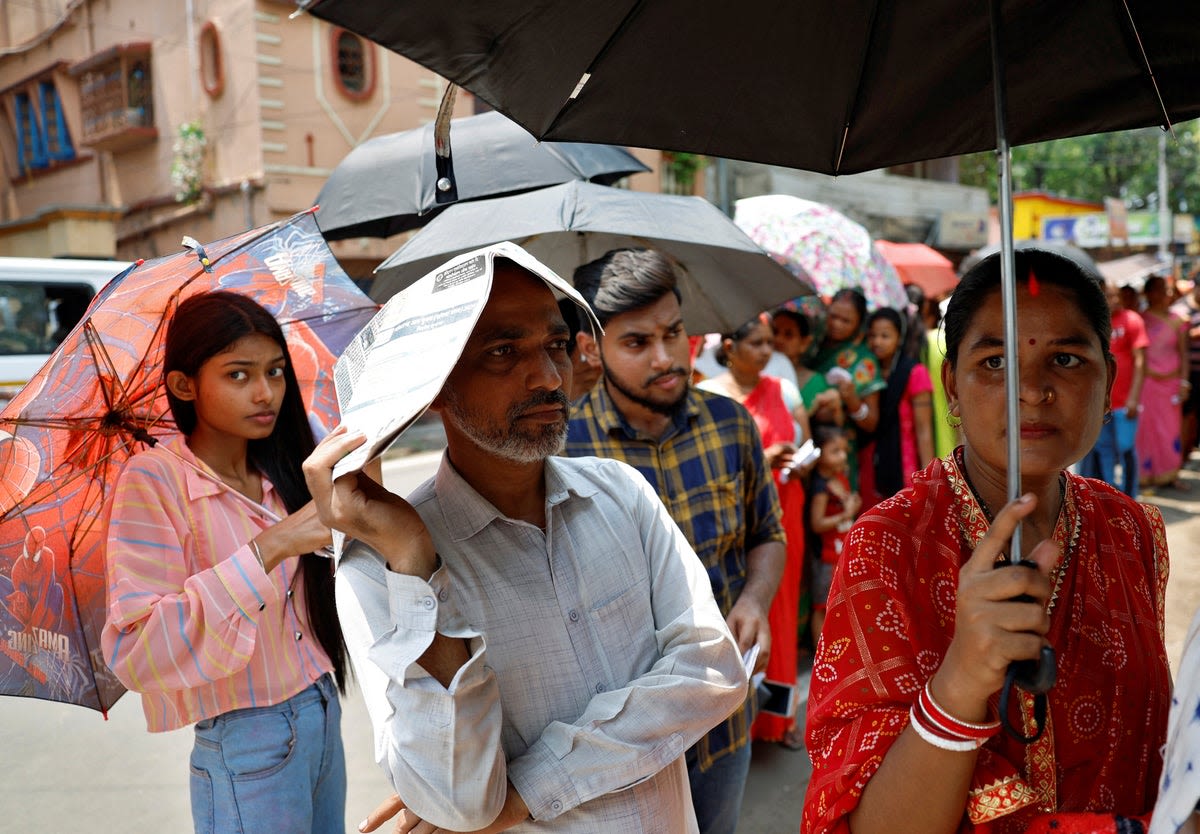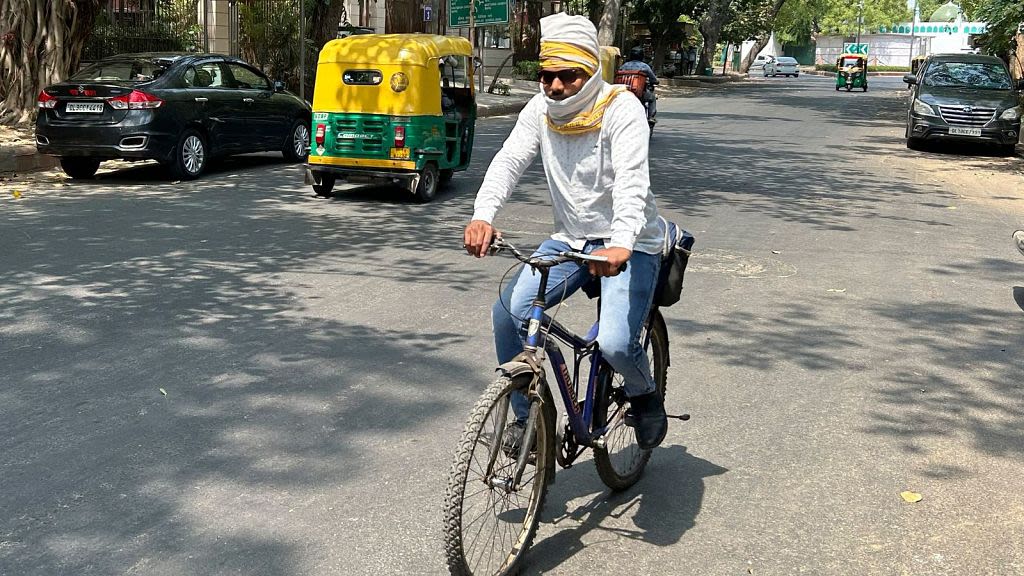Search results
News about India, Delhi, heatwave
News about India, IPOs, stock market
News about India, Mumbai, election
Also in the news
2 days ago · New Delhi, national capital of India. It is situated in the north-central part of the country on the west bank of the Yamuna River, adjacent to and just south of Delhi city (Old Delhi) and within the Delhi national capital territory. Learn more about New Delhi in this article.
- The Editors of Encyclopaedia Britannica
- What is New Delhi?New Delhi is the national capital of India.
- Where is New Delhi?New Delhi is situated in the north-central part of India on the west bank of the Yamuna River, adjacent to and just south of Old Delhi, the histori...
- When was New Delhi founded?In December 1911 King George V of Britain decreed that the capital of British India would be moved from Calcutta (which is today called Kolkata) to...
- What is New Delhi known for?New Delhi is best known as the location of India’s national government. New Delhi has great historical significance as it was home to powerful peop...
- Why is New Delhi so polluted?New Delhi is among the world’s most polluted cities. Contributing to the smog are traffic congestion, heavy industry, and the lack of cleansing win...
Delhi, officially the National Capital Territory (NCT) of Delhi, is a city and a union territory of India containing New Delhi, the capital of India.
- 200–250 m (650–820 ft)
- India
- Overview
- City site
- Climate
Delhi, city and national capital, and union territory, north-central India. The city of Delhi actually consists of two components: Old Delhi, in the north, the historic city; and New Delhi, in the south, since 1947 the capital of India, built in the first part of the 20th century as the capital of British India.
One of the country’s largest urban agglomerations, Delhi sits astride (but primarily on the west bank of) the Yamuna River, a tributary of the Ganges (Ganga) River, about 100 miles (160 km) south of the Himalayas. The national capital territory embraces Old and New Delhi and the surrounding metropolitan region, as well as adjacent rural areas. To the east the territory is bounded by the state of Uttar Pradesh, and to the north, west, and south it is bounded by the state of Haryana.
Delhi has been the centre of a succession of mighty empires and powerful kingdoms. Numerous ruins scattered throughout the territory offer a constant reminder of the area’s history. Popular lore holds that the city changed its locality a total of seven times between 3000 bce and the 17th century ce, although some authorities, who take smaller towns and strongholds into account, claim it changed its site as many as 15 times. All the earlier locations of Delhi fall within a triangular area of about 70 square miles (180 square km), commonly called the Delhi Triangle. Two sides of the triangle are articulated by the rocky hills of the Aravalli Range—one to the south of the city, the other on its western edge, where it is known as the Delhi Ridge. The third side of the triangle is formed by the shifting channel of the Yamuna River. Between the river and the hills lie broad alluvial plains; the elevation of the territory ranges from about 700 to 1,000 feet (200 to 300 metres).
Britannica Quiz
Discover India
The ridges and hillsides of the national capital territory abound in thorny trees, such as acacias, as well as seasonal herbaceous species. The sissoo (shisham; Dalbergia sissoo) tree, which yields a dark brown and durable timber, is commonly found in the plains. Riverine vegetation, consisting of weeds and grass, occurs on the banks of the Yamuna. New Delhi is known for its flowering shade trees, such as the neem (Azadirachta indica; a drought-resistant tree with a pale yellow fruit), jaman (Syzygium cumini; a tree with an edible grapelike fruit), mango, pipal (Ficus religiosa; a fig tree), and sissoo. It also is known for its flowering plants, which include a large number of multicoloured seasonals: chrysanthemums, phlox, violas, and verbenas.
The animal life of the national capital territory, like its plant life, is quite diverse. Among carnivorous animals are leopards, hyenas, foxes, wolves, and jackals, which inhabit the ravine lands and hilly ridges. Wild boars are sometimes spotted along the banks of the Yamuna. Monkeys are found in the city, especially around some of the temples and historical ruins. Birdlife is profuse; year-round species include pigeons, sparrows, kites, parrots, partridges, bush quail, and, on the ridges, peafowl. The lakes around the city attract seasonal species. Fish are plentiful in the Yamuna, and an occasional crocodile also may be found there.
Are you a student? Get Britannica Premium for only 24.95 - a 67% discount!
The climate of Delhi is characterized by extreme dryness, with intensely hot summers. It is associated with a general prevalence of continental air, which moves in from the west or northwest, except during the season of the monsoon, when an easterly to southeasterly influx of oceanic air brings rain and increased humidity. The summer season lasts f...
Aug 9, 2018 · Learn about the history, geography, and problems of New Delhi, the capital city of India. Find out why and how the capital was moved from Kolkata to New Delhi in 1911.
Learn about the history, geography, culture, and attractions of New Delhi, the capital of India. Find out how New Delhi became the capital in 1912, what is the difference between Delhi and New Delhi, and what is the climate and population of the city.
People also ask
What is the national capital of India?
When did Delhi become the capital of India?
Is Delhi a city or a country?
Which is the most populous city in India?
4 days ago · India, country that occupies the greater part of South Asia. It is made up of 28 states and eight union territories, and its national capital is New Delhi, built in the 20th century just south of the historic hub of Old Delhi to serve as India’s administrative center.







